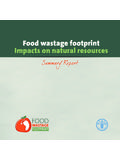Transcription of Global status report on alcohol and health
1 Global status report on alcohol and health WHO Library Cataloguing-in-Publication Data Global status report on alcohol and health . - epidemiology. drinking - adverse effects. control, Formal - methods. of illness. policy. health Organization. ISBN 978 92 4 156415 1 (NLM classification: WM 274). World health Organization 2011. All rights reserved. Publications of the World health Organization can be obtained from WHO Press, World health Organization, 20 Avenue Appia, 1211 Geneva 27, Switzerland (tel.: +41 22 791 3264; fax: +41 22 791 4857; e-mail: Requests for permission to reproduce or translate WHO publications whether for sale or for noncommercial distribution should be addressed to WHO Press, at the above address (fax: +41 22 791 4806; e-mail: The designations employed and the presentation of the material in this publication do not imply the expression of any opinion whatsoever on the part of the World health Organization concerning the legal status of any country, territory, city or area or of its authorities, or concerning the delimitation of its frontiers or boundaries.))
2 Dotted lines on maps represent approximate border lines for which there may not yet be full agreement. The mention of specific companies or of certain manufacturers' products does not imply that they are endorsed or recommended by the World health Organization in preference to others of a similar nature that are not mentioned. Errors and omissions excepted, the names of proprietary products are distinguished by initial capital letters. All reasonable precautions have been taken by the World health Organization to verify the information contained in this publication. However, the published material is being distributed without warranty of any kind, either expressed or implied.
3 The responsibility for the interpretation and use of the material lies with the reader. In no event shall the World health Organization be liable for damages arising from its use. Design and layout: L'IV Com S rl, Le Mont-sur-Lausanne, Switzerland. Printed in Switzerland. CONTENTS. Foreword v Acknowledgements vii Abbreviations ix Introduction x 1. Consumption 2. How much do people drink? 3. Total adult per capita consumption 4. Unrecorded alcohol consumption 4. Adult per capita consumption and income of countries 6. Most consumed alcoholic beverages 6. Changes in alcohol consumption over time 8. Trends in adult per capita consumption since 1990 8.
4 Five-year change 2001 2005 in alcohol use 9. alcohol consumption among young people 10. Patterns of drinking 12. Abstention 12. Patterns of drinking score 14. Heavy episodic drinking 16. 2. Consequences 20. alcohol and health 20. How alcohol causes disease and injury 20. The burden of disease attributable to alcohol 23. alcohol -attributable mortality 24. alcohol -attributable burden of disease and injury 29. alcohol consumption compared to other health risks 31. alcohol , health and economic development 33. Harm to society 34. Harm to other people 35. Harm to society at large 36. 3. Policies and interventions 40. Leadership 42.
5 Availability of alcohol 43. Prices and taxes 45. Drinking and driving 46. alcohol advertising and marketing 49. Raising awareness 52. Treatment 53. Conclusion 53. iii Global status report on alcohol and health References 54. Appendix I 59. Country profiles 59. AFR 61. AMR 107. EMR 143. EUR 165. SEAR 219. WPR 231. Appendix II 259. Additional indicators 259. Appendix III 273. alcohol consumption data 273. Appendix IV 279. Data sources and methods 279. Data sources 279. Country profiles: indicators 280. WHO regions, WHO subregions and World Bank income groups 280. 1. Consumption 282. 2. Consequences 284. 3. Policies and interventions 286.
6 Iv FOREWORD. T. he harmful use of alcohol is a worldwide problem resulting in millions of deaths, including hundreds of thousands of young lives lost. It is not only a causal factor in many diseases, but also a precursor to injury and violence. Furthermore, its negative impacts can spread throughout a community or a country, and beyond, by influencing levels and patterns of alcohol consumption across borders. The Global status report on alcohol and health (2011) presents a comprehensive perspective on the Global , regional and country consumption of alcohol , patterns of drinking, health consequences and policy responses in Member States.
7 It represents a continuing effort by the World health Organization (WHO) to support Member States in collecting information in order to assist them in their efforts to reduce the harmful use of alcohol , and its health and social consequences. In May 2010, the World health Assembly (WHA), representing all 193 WHO Member States, approved a resolution to endorse the Global strategy to reduce the harmful use of alcohol . The strategy includes an array of evidence-based policies and interventions that can protect health and save lives if adopted, implemented and enforced. The World health Assembly resolution urged countries to strengthen national responses to public health problems caused by the harmful use of alcohol .
8 Many countries recognize the serious public health problems caused by the harmful use of alcohol and have taken steps to adopt preventive policies and programmes, particularly to reduce drink driving and the carnage that it causes. However, it is clear that much more needs to be accomplished. This report , which is written for all who are concerned about the dangers posed by the harmful use of alcohol , can serve as a comprehensive knowledge base on the status of alcohol consumption, alcohol -related harm and alcohol policies in the world. health ministries and other concerned parties can use it to support the development and implementation of their policies and interventions.
9 Since 1974, WHO has been actively involved in documenting and reporting on alcohol - related health issues and problems. Indeed, this publication follows in the wake of the first Global status report on alcohol in 1999 and the second in 2004. These reports were based on Global , regional and national data collection efforts supported and coordinated by WHO. Data collection initiatives began with the Global alcohol Database in 1996, which was further developed and transformed into the Global Information System on alcohol and health (GISAH; ) in 2008, and which now contains data on more than 200 alcohol -related indicators. v Global status report on alcohol and health In recent years, a larger number of countries have been providing data, enabling WHO to create a more comprehensive picture of the Global situation on alcohol use and its health consequences.
10 However, many gaps in the data remain and a detailed picture cannot be clearly drawn for all countries and regions. This information is critical in assessing progress in reducing the harmful use of alcohol at all levels and in monitoring and evaluating progress made in the implementation of the Global strategy. I therefore encourage WHO. Member States and all stakeholders to make a joint effort to improve data collection and reporting. Dr Ala Alwan Assistant Director-General Noncommunicable Diseases and Mental health World health Organization vi ACKNOWLEDGEMENTS. T. his report was produced by the Management of Substance Abuse Team (MSB).
















